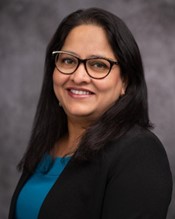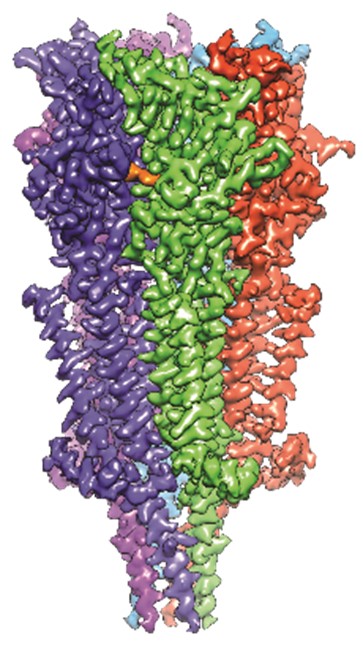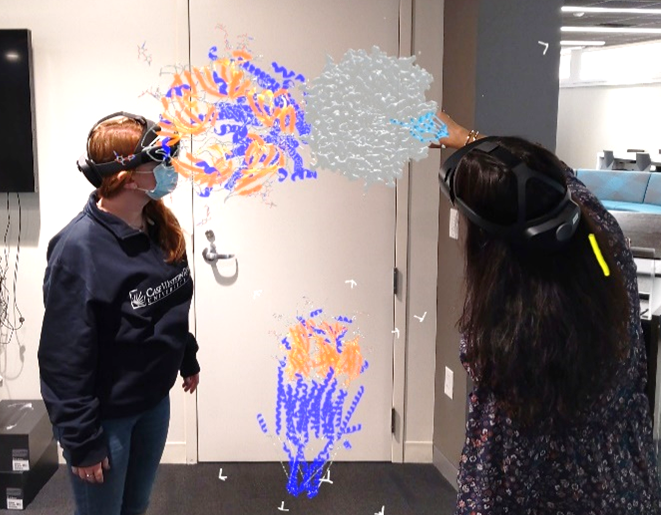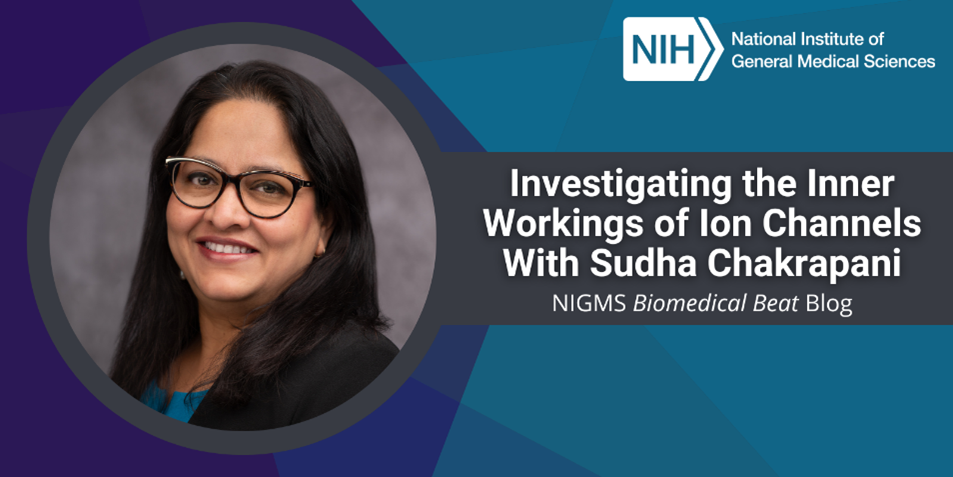
“Curiosity was a central theme in my learning process,” says Sudha Chakrapani, Ph.D., a professor and chair of the department of pharmacology at Case Western Reserve University in Cleveland, Ohio. As a high schooler in India, she especially enjoyed her science classes because they fostered her curiosity and allowed her to ask more questions than other subjects did. She was curious about how to use science to solve the challenges she and her community faced, like access to safe drinking water. Seawater surrounded them, so could they find a way to convert it into drinking water?
As part of India’s annual National Teachers’ Day celebration, high school seniors take on the role of educators and teach their younger peers for the day. Dr. Chakrapani loved the experience, and it solidified what she already knew: She wanted to go to college to be a science teacher. After earning her bachelor’s degree, she entered back-to-back master’s programs in biochemistry and biomedical engineering, where she had the opportunity to do hands-on research.
“As a high schooler, I thought that becoming a teacher was the only way to stay close to science,” says Dr. Chakrapani. “But when I was getting my master’s degree and learned that I could become a scientist and be a teacher, it changed all that, and there was no looking back.”
Investigating Ion Transporters
Dr. Chakrapani was introduced to the type of research she does now while earning her biomedical engineering master’s degree. She studied the communication between nerve cells and other parts of the body, and designed molecules that could stop the spread of electrical signals to muscle cells. These molecules targeted a specific kind of receptor, called nicotinic acetylcholine receptors (nAChRs), that have a role in muscle contraction.
These receptors piqued Dr. Chakrapani’s curiosity so much that she joined the lab of Tony Auerbach, Ph.D., at the University of Buffalo in New York for her doctoral degree because of his expertise in studying them. nAChRs are a type of ligand-gated ion channel, meaning they allow ions to pass from one side of a membrane to the other when the binding of a specific molecule activates them. Nicotine—a compound found in tobacco products—or the neurotransmitter acetylcholine can activate nAChRs. Dr. Chakrapani studied their inner workings, including mapping how their structure changes after activation in the highest molecular detail possible.
After finishing her Ph.D., Dr. Chakrapani joined the lab of Eduardo Perozo, Ph.D., as a postdoctoral researcher at the University of Virginia in Charlottesville. (Later, she moved with the lab to the University of Chicago in Illinois.) Under Dr. Perozo’s guidance, she learned more about protein biochemistry and mastered x-ray crystallography and electron paramagnetic resonance spectroscopy to study protein structure and movements. These techniques allow a researcher to monitor changes in proteins, including how molecular machines like ion channels shapeshift to do their jobs. “To really understand these systems, which are highly sensitive to genetic variations and underlie many diseases, we need more information about their activity,” says Dr. Chakrapani.

At Case Western, Dr. Chakrapani now leads a laboratory that uses what she learned during all of her training, plus cryogenic electron microscopy (cryo-EM), to investigate ion transport in healthy and disease conditions and how medicines can target it to treat specific diseases. The lab studies ligand-gated ion channels, including a family called serotonin-3 receptors and their role in passing electrical information from a nerve cell to a muscle cell. One subgroup of serotonin-3 receptors is involved in electrical signaling between the brain and gut and controls mucus secretion and peristalsis—the involuntary contracting and relaxing of muscles that moves food through the digestive system.
Sometimes this subgroup of receptors becomes overactive, which can cause irritable bowel syndrome (IBS). People with IBS experience symptoms such as abdominal pain and changes to bowel movements. Dr. Chakrapani wants to know why increased activity of this receptor subgroup causes IBS, if the ion channels are the wrong shape, and, if so, whether the changes in shape are due to genetic variations. Her team will use this information to design new medicines to reduce the activity of this subgroup of serotonin-3 receptors and ease IBS symptoms.
One challenge Dr. Chakrapani faces is that the members of the serotonin-3 receptor family “look” alike, so while a medicine may reduce the activity of the desired receptor subtype as intended, it might also affect the activity of others unintentionally, causing new problems. To design a molecule that will only affect one kind of serotonin-3 receptor, researchers will need to map the fine details of each of them—something Dr. Chakrapani’s lab is well suited to do.
The Importance of Collaboration

During her training, Dr. Chakrapani learned how beneficial it is to approach research questions from different perspectives, and she has always kept that in mind. “We as a scientific community realize that only using one technology or only working with colleagues within our field of study will block scientific progress,” she says. Because of that, she has built a lab full of scientists with varied areas of expertise: cell biologists, structural biologists, computational biologists, experts in machine learning, medical doctors, and more. As chair of the department of pharmacology, Dr. Chakrapani has also worked to build a department that’s as interdisciplinary as possible. Together, its members can ask broader questions, analyze larger datasets, and contribute more to human medicine.
“I teach my students to be curious and open to new ideas and to surround themselves with people with different viewpoints and areas of expertise, because it changes the way you think about science,” Dr. Chakrapani adds.
Dr. Chakrapani’s research is supported by the NIGMS Maximizing Investigators’ Research Award program through grant R35GM134896.







